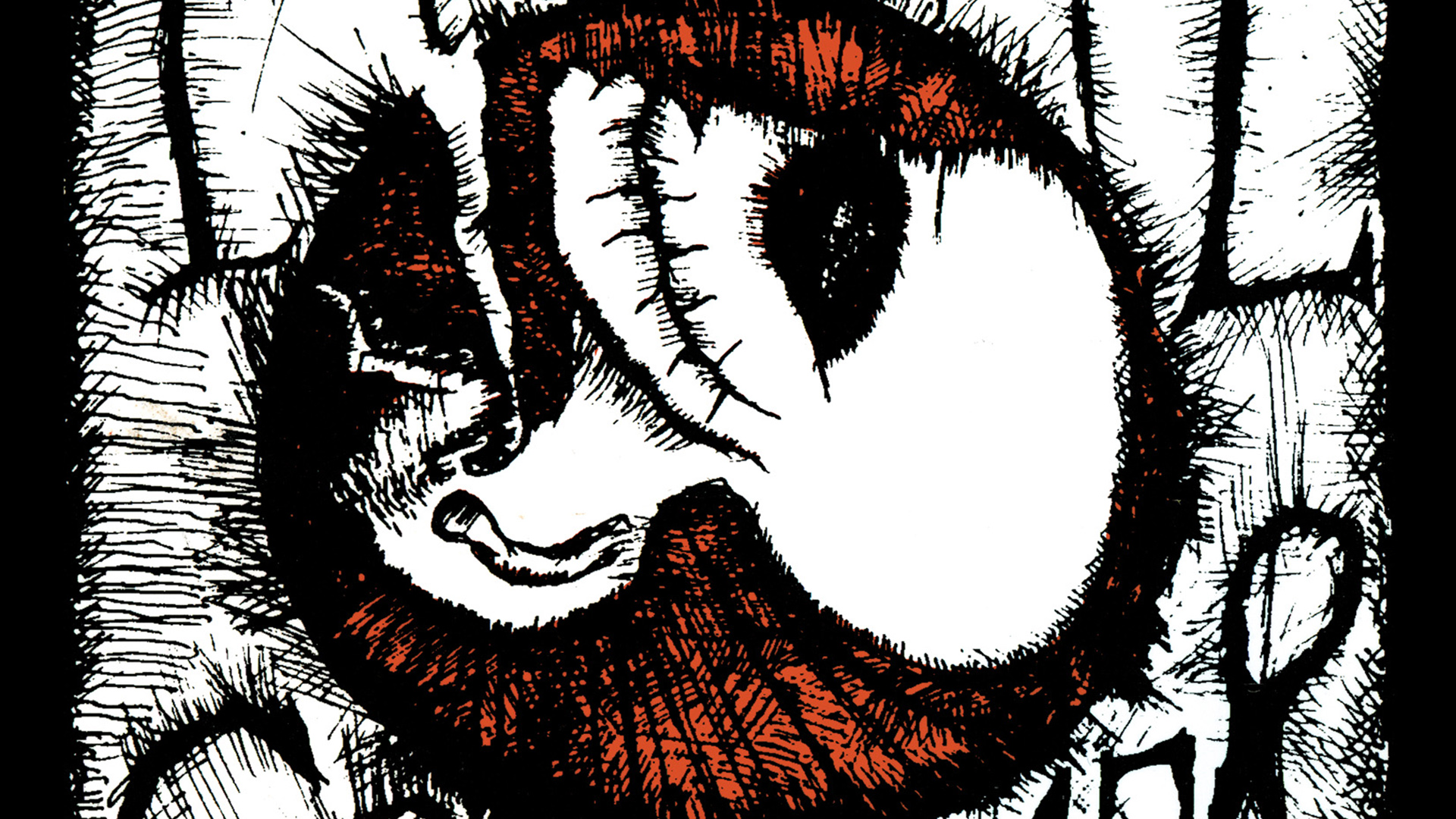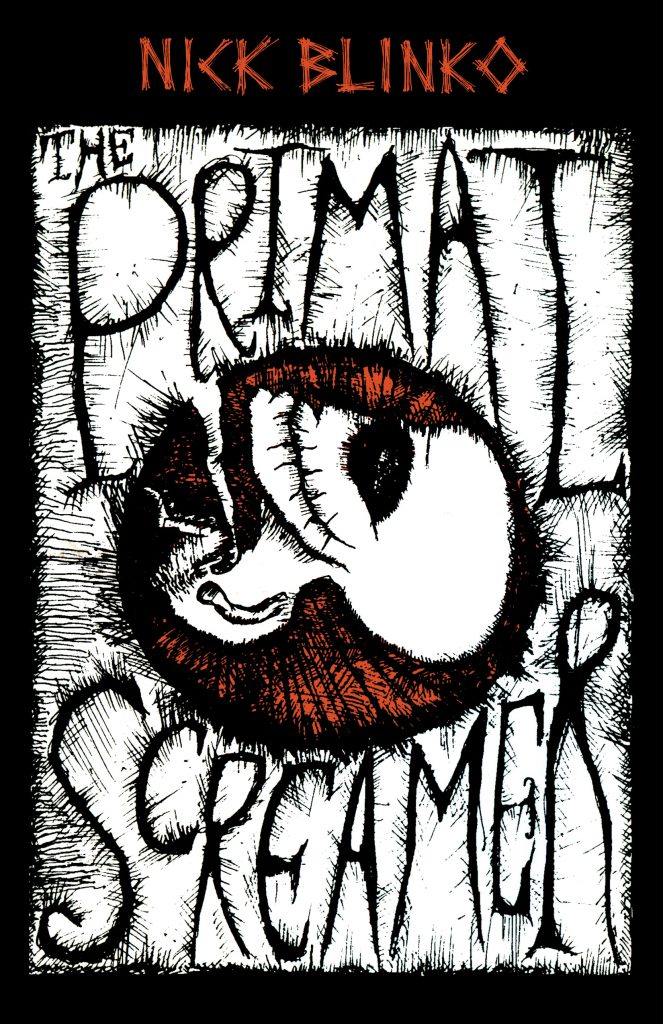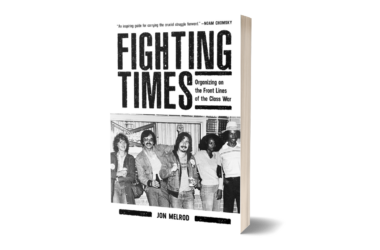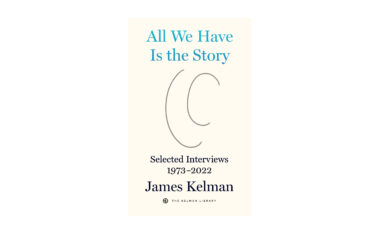By Michael Schaub
Bookslut
September 2005
It’s easy to write about rock; it’s nearly impossible to write well about rock. But those of us who care about literature and rock and roll never stop hoping for the great rock novel. I solicited suggestions from the readers of Bookslut — with some help from David and the readers of Largehearted Boy. I received more responses than I thought possible. What follows are short rundowns of 50 rock novels, many of which were praised by our readers (and a few of which were panned). Some, like High Fidelity, are extremely popular; others, like The Last Rock Star Book haven’t found (or sought) a wide mainstream audience. But there’s something for everyone here, whether you’re an indie rock snob (Hi! I’m Mike!) or a dedicated Elvis fan. My thanks to the readers of Bookslut and Largehearted Boy — I hope you all find something of interest here.
WE WANT THE AIRWAVES: PUNK ROCK NOVELS
The
Anomalies, Joey Goebel (2003).
Goebel was the lead singer for the
punk band The Mullets, and his first novel follows a band of five Kentucky
misfits who play “power pop new wave heavy metal punk rock music.” Characters
include a wheelchair-bound Satanist and an 80-year-old nymphomaniac, and if
that doesn’t make for a good band, then just shoot me now. The Baltimore City
Paper called the book “enjoyable” and “often funny.” Goebel’s latest novel, Torture the
Artist, earned the young author comparisons to Chuck Palahniuk.
The
Primal Screamer, Nick Blinko (1995).
Written by the enigmatic lead
singer of Rudimentary Peni, The Primal Screamer was an autobiographical
work, apparently based on his band’s early years. One of the most celebrated
books ever about punk, it’s long out of print, and selling for more than $100
on most used books websites. The novel was longlisted for the Booker Prize
when it was released, and remains a cult classic.
Tales
of a Punk Rock Nothing, Abram Shalom Himelstein and Jamie Schweser
(1998).
The first novel from these two young writers is funny, smart and
surprisingly compassionate. Set in early ’90s D.C., the novel follows a
Tennessee teenager who moves to Washington to take part in the city’s
legendary (or once-legendary) punk scene. Himelstein and Schweser ditch the
traditional narrative form in favor of letters, journal entries, and issues of
a fledgling zine — and it works unbelievably well. If you’ve ever gone to
a Food Not Bombs meeting or vandalized a WalMart, you’ll find a lot to
identify with here. If not, you’ll still have a great time reading this
incredibly entertaining debut.
The
Gangster of Love, Jessica Hagedorn (1996).
Hagedorn, raised in
Manila and San Francisco, is probably best known for her novel Dogeaters,
but she gained countless fans from this book, the story of two Filipino
siblings who move to the States in the ’70s. The sister, Rocky, plays in a
rock band called The Gangsters of Love while trying to adjust to her new home.
Time magazine called the novel “elegant and smart,” and Francine Prose praised
the book in The New York Times.
Cut My
Hair, Jamie S. Rich (2000).
The debut novel from the
editor-in-chief of Oni Press is a sweet look at a California teenager who
“spends his nights acting stupid in punk rock clubs and his days aimlessly
reading comics and listening to tunes.” It’s beloved by those lucky enough to
have heard about it; the Willamette Week called it “a lyrical elegy to lost
youth, the death of modern rock, and the search for something authentic.” Very
highly recommended.
Hard Core Logo, Michael Turner (1993).
Turner is
one of Canada’s most dangerous writers — in a good way — and this is
the book that gained him that reputation. The novel chronicles the reunion of
a popular Canadian punk band years after they broke up. There’s plenty of
hilarious moments, but the story hurtles toward a devastating, though
necessary, conclusion. Turner’s cult classic book became a cult classic movie
in 1996, when it was adapted by filmmaker Bruce McDonald. Read the book, then
see the movie — in a lot of ways, this novel is punk rock.
BELIEVING THE STRANGEST THINGS, LOVING THE ALIEN: SF ROCK NOVELS
The
Armageddon Rag, George R. R. Martin (1983).
Out of print for
years, Spectra recently reissued this SF/horror thriller about the murder of a
singer and a music promoter. Martin is known and respected among SF fans for
his short stories, but this novel drew a dedicated following among genre and
mainstream readers alike.
Passing
Through the Flame, Norman Spinrad (1975).
An old paperback
edition of this book carries the tag line: “From rock stars to porno
kings…a major novel of sex, drugs.” Despite that promise, the novel is now
out of print, but it’s recommended by a Bookslut reader named Edward St. John,
who describes the book, about a director working on a rock movie, as “kind of
a rock version of Haskell Wexler’s film Medium Cool.'” That, plus the sweet
’70s cover art, is enough to make me curious. Spinrad recorded a song of the
same name, based on the novel, with the band Schizotrope, which also included
Richard Pinhas and Maurice Dantec.
Glimpses,
Lewis Shiner (1993).
The novel follows Ray Shackleford, a feckless
baby-boomer repairman who gains the ability to hear and record famous
unfinished rock albums. The Minneapolis-St. Paul City Pages called the book “a
rock lover’s wet dream set to type.” Maybe a 50-year-old white male rock
lover’s wet dream, but hey, there’s no shame in that.
Idoru,
William Gibson (1996).
I have never heard of this particular author, but
apparently he is well-known for innovating the “computer punks” genre of
fiction. (I’m just kidding. Seriously. Don’t say mean things about me on your
blog.) Gibson’s popular novel follows a popular Japanese rock singer named
Rez, who is engaged to a woman who may or may not have been created by a
computer. Neuromancer
might be more famous, but some Gibson fans regard Idoru as his best.
IT IS MY LIFE, IT IS MY VOICE: INDIE AND ALTERNATIVE ROCK NOVELS
Boy Island, Camden Joy (2000).
One of
America’s greatest rock writers, Joy takes on the rock of David Lowery
(Cracker, Camper Van Beethoven) and the first Gulf War in this novel about
music and self-acceptance.
You
Think You Hear, Matt O’Keefe (2001).
A roadie for Delaware college
rockers the Day Action Band, Lou Farren tours with his friends and falls in
love with Cree, the drummer (who is herself in love with a singer from a band
called The Radials). Fellow author Blake Nelson called the novel “beautiful”
and “the definitive road novel of the indie punk generation.” I read the first
50 pages last night — it’s hilarious and nearly impossible to put down.
(Even at three in the morning.)
The
Exes, Pagan Kennedy (1998).
Kennedy, widely regarded as a demigod
of the early ’90s zine world, garnered critical praise for this novel about a
Boston indie-rock band, told in four parts. (Each band member has a chapter.)
It’s probably a good choice for anyone who still fondly remembers the Boston
indie scene of years past (The Pixies, think Blake Babies) or who can’t help
but roll their eyes at “the secret brotherhood of the ultracool indie guys.”
The
Carpet Frogs: Music After Tomorrow, Alan Arlt (2001).
It’s only
four years old, but Arlt’s debut novel has already become sort of legendary.
It’s the story of Symon Smith, a young Minneapolis rock singer/bassist dealing
with success and loss in the music world. Some readers have drawn comparisons
to The Beatles, though it’s more likely that Arlt based his story upon
legendary Minneapolis rockers The Replacements. This was recommended by
several readers, many of whom said it was the best rock novel they’ve ever read.
Never
Mind Nirvana, Mark Lindquist (2000).
A Seattle attorney tries to
reconcile his life as a rock musician and fan with his career as a deputy DA.
He’s forced to prosecute a fellow rocker on charges of date rape, earning him
the enmity of several of his former music scene acquaintances. Tama Janowitz
called Lindquist’s book “the first novel I’ve read that makes music as
important as food, clothing, romance,” and The New York Times found it “very
often entertaining.” (The cover’s pretty funny, too.) The novel was
controversial upon its release, after some Seattle journalists accused
Lindquist of exploiting the story of Isaac Brock, the Modest Mouse singer who
was accused of date rape in 1999. (Brock was never charged with a crime, and
Lindquist denies basing any element of his novel’s plot on the Brock controversy.)
How
Soon Is Never?, Marc Spitz (2003).
Fans of Morrissey and Marr will
undoubtedly be interested, but anyone who’s ever been despondent over the
breakup of their favorite band (I’m still upset about The Delgados) can relate
to Spitz’s novel. It’s a love story about two earnest fans trying to bring The
Smiths back together years after the band’s dissolution. Just try not to smile
in recognition at sentences like these: “When these songs make me laugh and
cry and smile or even want to drink, I know it’s a real impulse. I laugh. I
cry. I drink.” That’s what rock’s about, isn’t it?
Rock
Star Superstar, Blake Nelson (2004).
Part cautionary tale and part
love letter to the great American high school rock band, Nelson’s young-adult
novel has plenty of not-so-young-adult admirers — particularly in
Portland, where the book is set. Called “sweet” and “realistic” by the readers
who recommended it to us, Nelson’s novel doesn’t shy away from the harsh
realities of the music business.
SONGS MEAN A LOT WHEN SONGS ARE BOUGHT: ROCK INDUSTRY NOVELS
Gimme
More, Liza Cody (2000).
A thriller about rock widow Birdie Walker
and a harsh critique of the music industry, Cody’s novel, like her others,
fared better in Europe than the States. Her fans love this novel, but I’m not
sure I can get past the godawful cover.
Fuel-Injected
Dreams, James Robert Baker (1986).
Baker’s novel, a cult classic
that’s now back in print, is almost certainly a roman a clef about Phil
Spector. (Though don’t tell that to the publisher’s lawyers.) Dennis Contrelle
(read: Phil), an unhinged rock producer married to a beatiful singer named
Sharlene (read: Ronnie), becomes entwined in the life of DJ Scott Cochrane.
Baker’s fans consider this a classic of Los Angeles fiction, and an
indispensable reflection on rock in the ’60s.
Off
the Record, David Menconi (2000).
The first novel from a North
Carolina-based music critic, Off the Record is “the very unauthorized
account of the rise and fall of the Tommy Aguilar Band.” It garnered good
reviews from music critics who liked Menconi’s inside jokes and merciless
depictions of music industry bad guys.
Platinum
Logic, Tony Parsons (1981).
Evil music executives and tons of coke
in Thatcher-era England. This is the kind of sleazy-but-sometimes-fun book
they used to sell in airports, before Satan invented Mitch Albom. It’s long
out of print, but you can find it used.
The
Last of the Savages, Jay McInerney (1996).
A few readers
recommended this one, but a few more reported they were unimpressed by
McInerney’s fifth novel. It follows two prep school friends, one who becomes a
lawyer, and one who becomes a record producer (and drug addict, as record
producers in rock novels inevitably are). Publishers Weekly called it
“affirming and wise,” but Salon’s Stephanie Zacharek disagrees: “McInerney’s
understanding of the blues as an art form goes about as deep as two fingers of
cheap scotch, and it’s borderline racist to boot.”
WE HEAR THE PLAYBACK AND IT SEEMS SO LONG AGO: 1980s ROCK NOVELS
Twisted
Kicks, Tom Carson (1982).
I haven’t read it. But everyone I know
who has swears it’s the best, so this first novel by longtime journalist
Carson (who now writes for Esquire) might be worth checking out. It’s the
story of a New York rock singer who moves back to his hometown of Icarus,
Virginia.
The Smiths’ Meat Is Murder, Joe Pernice (2003).
Continuum’s 33 1/3
series of books is one of the coolest publishing imprints on the planet, and
here’s why. Pernice, the singer-songwriter behind the Scud Mountain Boys,
Chappaquiddick Skyline and the Pernice Brothers, writes his recollections of
the seminal Smiths album in novella form. I love both Pernice and the Smiths,
but it’s hard for me to imagine even Morrissey’s detractors not liking this
book. Like everything Pernice has ever done, this is highly recommended.
The Lonely Planet Boy, Barney Hoskyns (1995).
The veteran British
journalist’s novel, which garnered praise from Nick Hornby and Jonathan Coe,
follows a music writer/superfan who follows a singer named Mina on her tour.
It’s published by Serpent’s Tail, which is always a good sign.
ONE MORE BIG TIME ROCK AND ROLL STAR: ROCK STAR NOVELS
The
Rich Man’s Table, Scott Spencer (1998).
A young man finds out that
his father is legendary folk singer Luke Fairchild (read: Bob Dylan).
Spider
Kiss, Harlan Ellison (1961).
Originally published as
Rockabilly, this is one of the writer’s most admired works. It’s also
one of the first rock novels ever written. The main character, Stag Preston,
has echoes of Elvis, though he was evidently based on Jerry Lee Lewis. Several
readers recommended this one – it’s published with Ellison’s 1982 Stalking
the Nightmare.
Tender,
Mark Childress (1990).
Most of the readers who suggested this one seemed
to find it more charming than brilliant, but Tender has a lot of fans.
It’s essentially a novel about Elvis, though he’s named Leroy Kirby in the book.
SELLING ENGLAND BY THE POUND: BRITISH ROCK NOVELS
High
Fidelity, Nick Hornby (1995).
The novel that spoke to a generation
of rock-loving white guys who are jerks to their girlfriends. Actually, I love
this book, though it’s not quite as accomplished as Hornby’s masterpiece, About
a Boy. If you’ve only seen the (very good) movie: The book is set in
London, not Chicago, though Hornby’s characters are fairly universal. (At
least among rock-loving white guys who are jerks to their girlfriends.) The
scenes describing Rob’s attempts to make mix tapes — they have to be
perfect — are classic moments in rock literature.
Groupie,
Jenny Fabian (1969).
“Jenny Fabian” is British for “Pamela Des Barres.”
And that’s really all you need to know about this English relic from the ’60s.
Powder,
Kevin Sampson (2002).
I’m planning to read this one as soon as I can,
based on the ten readers who wrote me to recommend it. Sampson, former manager
of The Farm, chronicles the story of The Grams, a fictional Britpop band, in
this book. It’s had both fans and detractors among critics, but this testimony
from an Amazon.com reviewer might be all you need to know: “The characters
have some depth and the stories are are laugh out loud funny. . . . One other
thing to note – Sampson is obsessed with weird sex.” Rock!
The
Rotters’ Club, Jonathan Coe (2001).
Not technically a rock novel,
but you should still check out this hilarious and touching book from one of
the UK’s best young authors. I still laugh every time I think of Philip Chase,
the prog rock-obsessed student who writes breathless odes to Yes in his school
paper. Coe’s sequel, The Closed
Circle, was released earlier this year.
Sick
of Being Me, Sean Egan (2003).
The consensus of the readers who
wrote me about this one: Great, but dark. Egan doesn’t see the book as another
sex-drugs-rock and roll story, though. He writes: “For me, it is a literary
novel, one which just happens to have feature rock and drugs in places.”
Espedair Street, Iain Banks (1987). The Scottish author’s fourth book was recommended to me by about — let me count — 17,000 readers. So while I haven’t read it myself, I’m fairly comfortable saying that this novel has a hell of a lot of admirers. If you haven’t read Banks, this is probably a decent place to start.
SO YOU WANNA BE A ROCK AND ROLL STAR: AMATEUR/GARAGE BAND ROCK NOVELS
Say
Goodbye: The Laurie Moss Story, Lewis Shiner (1999).
A young San
Antonio native tries to make it big as a singer-songwriter in Los Angeles.
Shiner’s novel was wildly praised as one of the most realistic accounts of the
music industry ever. The New York Times Book Review loved it: “Shiner has
written a fine novel about rock ‘n’ roll by believing more in musicians’ human
nature than in their mythologies.”
Anything
Goes, Madison Smartt Bell (2002).
The story of a Southern bar band
(“We didn’t play Nirvana, we didn’t play punk and we didn’t play grunge, we
definitely didn’t play any originals and we also (praise the Lord!) didn’t
play Top 40.”) on a tour of the East Coast.
Reservation
Blues, Sherman Alexie (1995).
The celebrated Native American
writer tells the story of an Indian Catholic blues-rock band. Robert Johnson
makes an appearance.
The
Wishbones, Tom Perotta (1997).
Perotta’s novels might not be
revelatory, but they’re congenial and fun. The story of a New Jersey wedding
band, a movie version is expected within the next few years.
THERE’S MORE TO LIFE THAN BOOKS, YOU KNOW, BUT NOT MUCH MORE: THE BEST OF THE ROCK NOVELS
If You
Want Me to Stay, Michael Parker (2005).
Look for a full review of
this wonderful new novel next month. A brilliant work of Southern fiction, the
characters in If You Want Me to Stay are obsessed with soul music
— Marvin Gaye, Otis Redding, Archie Bell, the Stax/Volt and Muscle Shoals
sounds. Funny at times and wrenchingly sad at others, this is one of the most
perfectly realized novels I’ve read in recent years. Very highly recommended.
The
Ground Beneath Her Feet, Salman Rushdie (1999).
Rushdie is a
legendary rock fan — check out his essay about meeting U2 in his book Step
Across This Line. His love for pop music is apparent in this novel, a
retelling of the Orpheus and Eurydice story set in India, England and the US.
Any Rushdie book is a good place to start if you haven’t read him, but this
book is particularly sweet — he captures the feeling that rock can
inspire perfectly, at every turn. It’s a brilliant novel that bears reading
and rereading.
The
Commitments, Roddy Doyle (1987).
One of the most famous rock
books, in part because of the successful 1991 film version, directed by Alan
Parker. Doyle’s debut novel follows a soul band in Dublin, and was released in
the States at the peak of the country’s obsession with all things Irish.
Hilarious and gleefully profane, it includes the best/worst proposed name for
a band ever: And And! And. (Upon hearing this, a character sneers “Fuck fuck
exclamation mark you.” Doyle’s most recent novel, Oh, Play
That Thing, is about an Irish immigrant who moves to Chicago and
becomes Louis Armstrong’s manager. The reviews have been mostly poor, but
The Commitments remains a classic among rock novels.
Never
Mind the Pollacks, Neal Pollack (2003).
One of America’s funniest
writers, Neal Pollack has been both rock fan and rock musician. (Check out the
CD version of The Neal
Pollack Anthology of American Literature. If the song “I Wipe My Ass
on Your Novel” doesn’t make you laugh, then you are, perhaps, beyond hope.)
The novel’s main character is also named Neal Pollack (who changed his name
from “Norbert Pollackovitz”), and he’s a rock critic who’s had an outsized
influence on rock music through the years. This might be the funniest novel
about rock ever written; it’s certainly the funniest novel — and the best
— about rock criticism. If you read Pitchfork every day, and if you’re
reading this article you probably do, you’ll find something to love in this
hilarious and unexpectedly generous book.
Great
Jones Street, Don DeLillo (1973).
Do you like rock, but also like
bragging about the fact that you don’t own a TV? This novel by a Serious
Novelist might be for you. (I kid because I love.) DeLillo can’t help coming
off as pretentious occasionally — even his grocery lists probably
reference obscure moments in American history in a postmodern kind of way
— but this is one of his more accessible novels, and it’s worth a look.
The book tells the story of Bucky Wunderlick — yeah, Bucky Wunderlick
— who retreats into obscurity and loneliness at the height of his career.
It’s not as fun as The Ground Beneath Her Feet, but it’s smart and
occasionally funny.
The
Last Rock Star Book or: Liz Phair, A Rant, Camden Joy (1998).
A
young disaffected writer (named Camden Joy) is hired to write a “quickie”
paperback biography of Liz Phair, and becomes obsessed with the singer —
and his past — in the process. Joy is a brilliant and original writer who
takes more risks per page than most authors do in their entire careers, and
it’s impossible not to care about his deeply funny, deeply human characters.
You need to read this book.
NEW DAY RISING: NEW AND FORTHCOMING ROCK NOVELS
King
Dork, Frank Portman (2006).
Also known as Dr. Frank, Portman is the lead singer for the
influential Lookout! pop-punk band The Mr. T. Experience. King Dork
follows an American high school student who reads The Catcher
in the Rye for the first time. If Portman’s fiction is as witty as his
lyrics, this will be really great.
Owen
Noone and the Marauder, Douglas Cowie (2005).
Cowie blends
baseball and folk-punk in this recent rock novel. The Guardian says Cowie
“brings a disarming voice and a freshness to proceedings that might just make
you brush the dust off your guitar and try out a few chords.”
Miss
Misery, Andy Greenwald (2005).
The author of Nothing
Feels Good: Punk Rock, Teenagers, and Emo returns with a novel about a
twentysomething New Yorker who becomes interested in two girls he meets online
(one 22, one 17). This will be the first novel published by new Simon &
Schuster imprint Simon Spotlight Entertainment.
Too
Much Too Late, Marc Spitz (2006).
Spitz chronicles the Jane
Ashers, a once-popular rock band that chooses, perhaps unwisely, to reunite.
Gary
Benchley, Rock Star, Paul Ford (2005).
Based on Ford’s popular
column in The Morning News, this could become the definitive novel of the
21st-century Williamsburg hipster. Gary’s band is an “indie-prog” combo called
Schizopolis. A whole lot of people are anticipating this one.
The
Band’s Music from Big Pink, John Niven (2005).
Another entry in
Continuum’s 33 1/3 series, Andrew O’Hagan says the book “has a powerful style
of its own and a story that might illuminate an entire period.” It’s a great
series of books, and I’m especially looking forward to Niven’s take on one of
my favorite albums.






